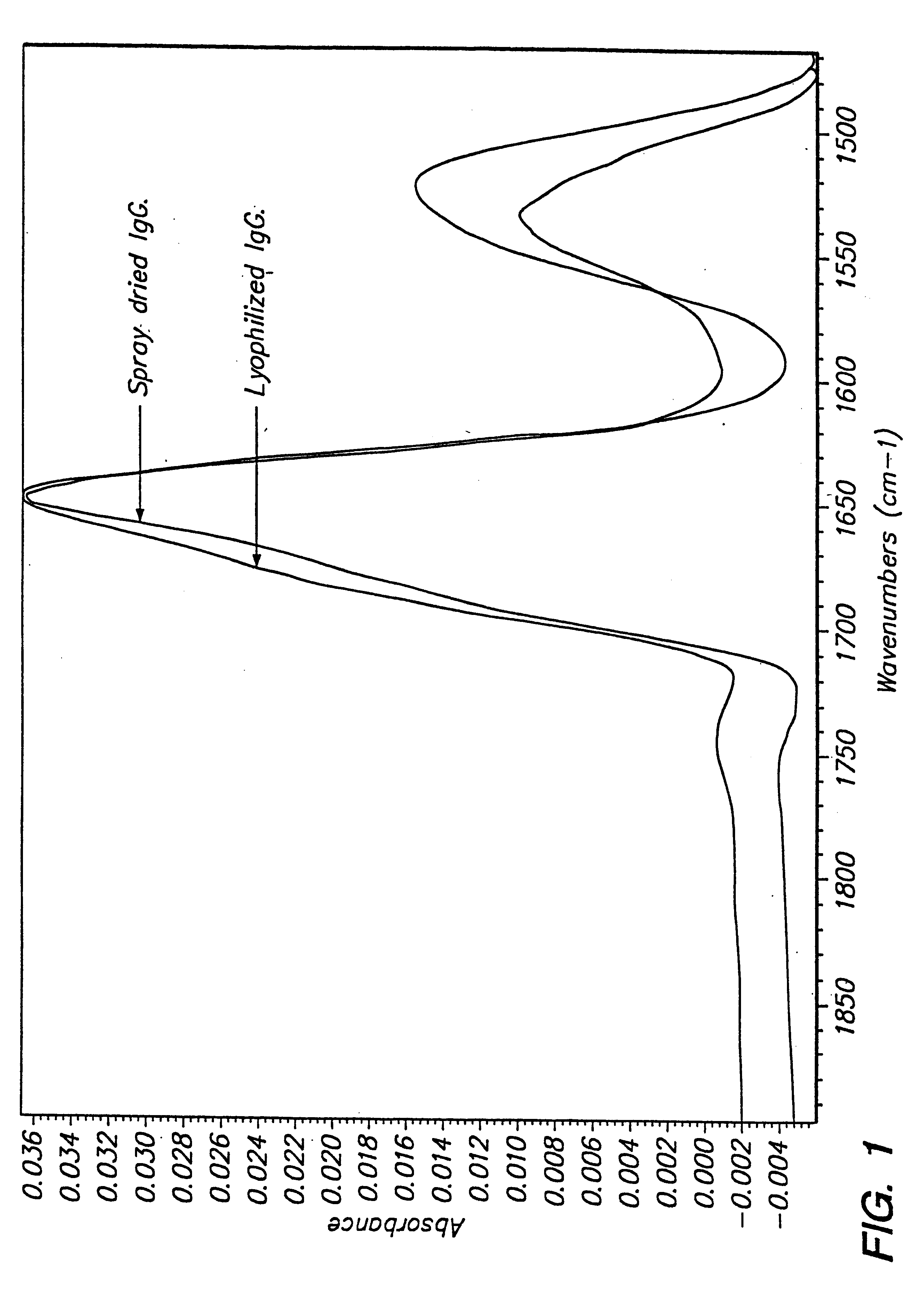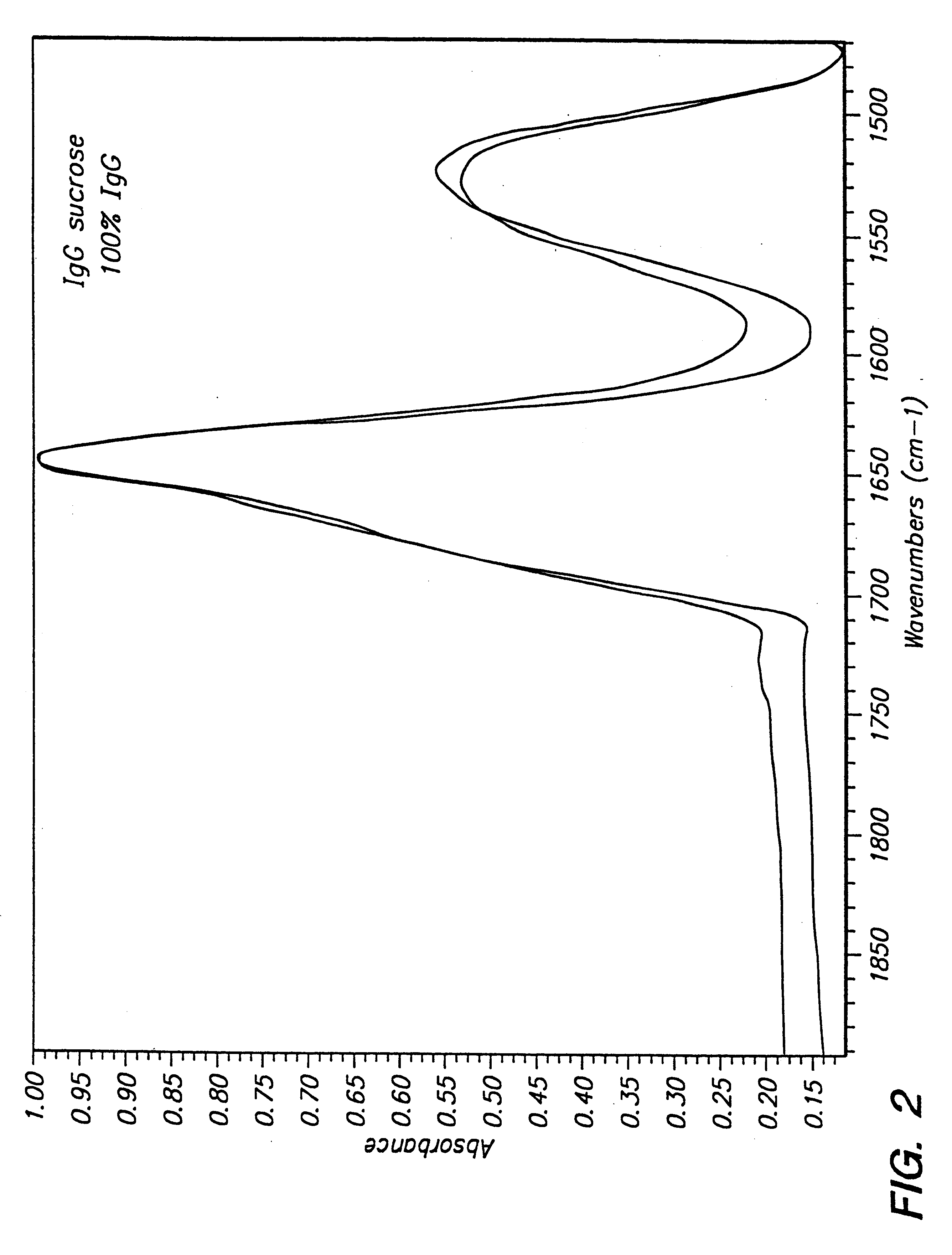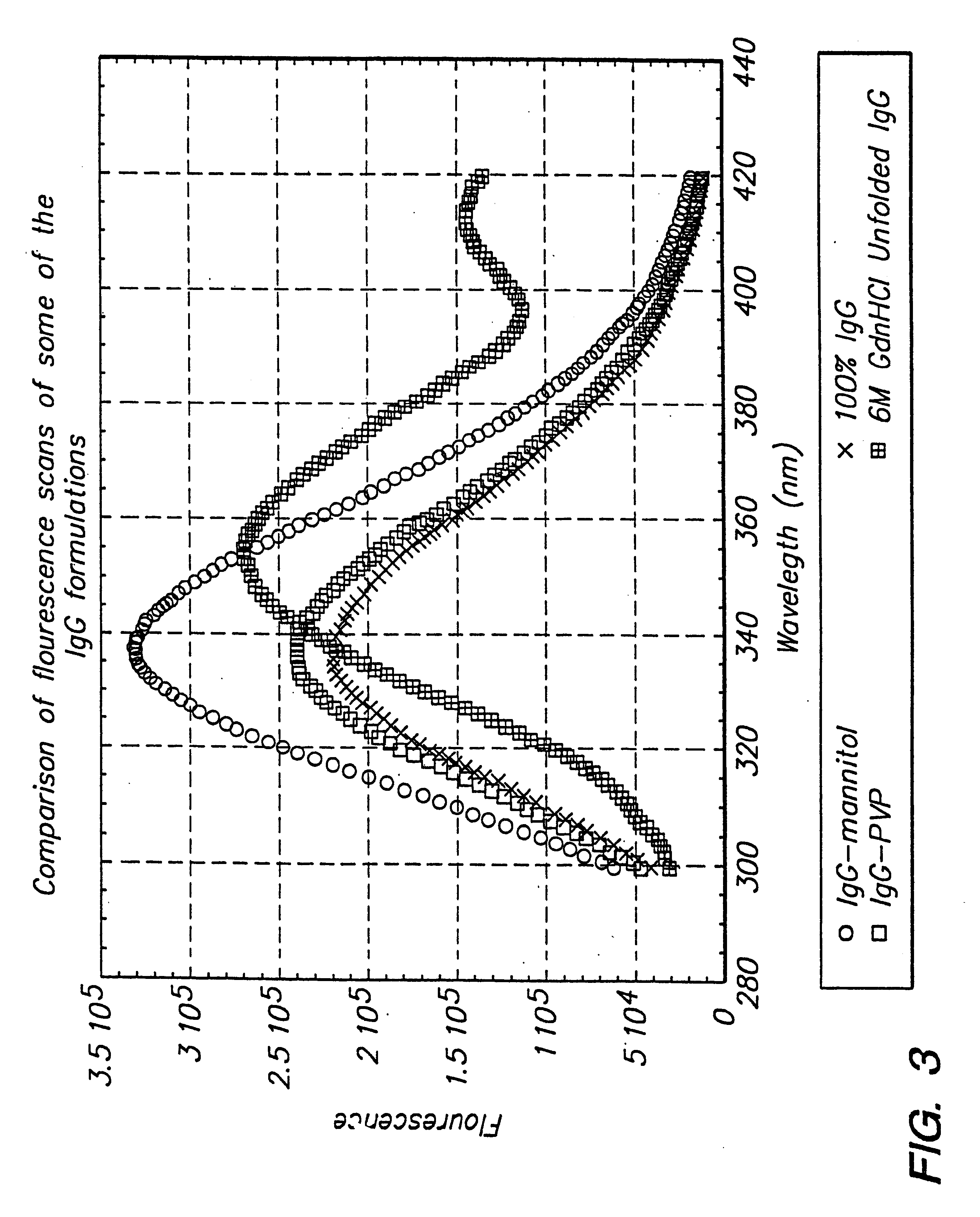Dispersible antibody compositions and methods for their preparation and use
a technology of antibodies and compositions, applied in the field of humoral immunity protection, can solve the problems of difficult to deliver pharmaceutical compositions as dry powders, difficult to deliver pharmaceutical compositions, and difficult to meet the requirements of anti-allergic properties, so as to reduce the delivery dose efficiency, improve the delivery efficiency of powders, and reduce the effect of delivered dose efficiency
- Summary
- Abstract
- Description
- Claims
- Application Information
AI Technical Summary
Problems solved by technology
Method used
Image
Examples
example 1
100% IgG FORMULATION FOR PULMONARY DELIVERY
Bulk lyophilized IgG was formulated and spray dried as described above. The 100% IgG dry powder was analyzed for moisture as described above and found to contain 2.5-3.5% moisture.
The particle size distribution was measured by centrifugal sedimentation as described above and was determined to be 1.3 .mu.m to 1.5 .mu.m MMD. The delivered dose of the IgG powder composition was measured as described above and was determined to be 60 to 62% of the total powder (5.0 mg) loaded into the device. The aerosol particle size distribution, measured as described above was determined to be 4.1 .mu.m MMAD, with 61.6% of the particles <5.0 .mu.m diameter.
The antibody integrity was assayed by SEC-HPLC and dynamic light scattering (DLS) as described above. The powder did not reconstitute easily in water (47% reconstitution), so no UV measurement was possible. The mean diameter of particles was found to be 18 nm by DLS. The size distribution indicated the pre...
example 2
90% IgG FORMULATION FOR PULMONARY DELIVERY
Bulk lyophilized IgG was formulated and spray dried as described above. The 990% IgG dry powder composition contained 90% IgG and 10% citrate. The formulation contained 2-2.5% moisture.
The particle size distribution was determined by centrifugal sedimentation to be 1.3 .mu.m to 2.0 .mu.m MMD, with 98% of the particles less than 5 .mu.m. The delivered dose of the IgG powder was determined to be 46% of the total powder (5.0 mg) loaded into the device. The aerosol particle size distribution was determined to be 1.5 .mu.m MMAD, with 99% of the particles <5.0 .mu.m in diameter.
The powder gave about 66% reconstitution in water. The antibody integrity was assayed by SEC-HPLC. About 15% of soluble aggregates was detected in the reconstituted sample after spray-drying. The fluorescence maximum for the reconstituted sample was around 337 nm, indicating no alteration in antibody conformation after spray drying.
example 3
700% IgG FORMULATION CONTAINING CARBOHYDRATE EXCIPIENT
Bulk lyophilized IgG was formulated and spray dried as described above. A 70% formulation was achieved by dissolving 3.5 mg of IgG and 1 mg sucrose in 1.0 ml of 2 mM citrate buffer. The 70% IgG dry powder composition contained 70% IgG, 20% sucrose and 10% citrate. The pH of the resulting solution was determined to be about 6.5. The formulation contained 2-2.5% moisture.
The particle size distribution was determined by centrifugal sedimentation to be 1.0 .mu.m to 1.5 .mu.m MMD, with 97% of the particles less than 5 .mu.m. The delivered dose of the IgG powder was determined to be 45 to 52% of the total powder (5.0 mg) loaded into the device. The aerosol particle size distribution was determined to be 3.2 .mu.m MMAD, with 67% of the particles <5.0 .mu.m in diameter and 45% under 3.3 .mu.m.
The antibody integrity was assayed by UV and SEC-HPLC. The powder reconstituted well, with complete recovery of antibody and absence of aggregates ...
PUM
| Property | Measurement | Unit |
|---|---|---|
| particle size | aaaaa | aaaaa |
| mass median diameter | aaaaa | aaaaa |
| mass median diameter | aaaaa | aaaaa |
Abstract
Description
Claims
Application Information
 Login to View More
Login to View More - R&D
- Intellectual Property
- Life Sciences
- Materials
- Tech Scout
- Unparalleled Data Quality
- Higher Quality Content
- 60% Fewer Hallucinations
Browse by: Latest US Patents, China's latest patents, Technical Efficacy Thesaurus, Application Domain, Technology Topic, Popular Technical Reports.
© 2025 PatSnap. All rights reserved.Legal|Privacy policy|Modern Slavery Act Transparency Statement|Sitemap|About US| Contact US: help@patsnap.com



